Shiny geranium identification and control
Information about the noxious weed shiny geranium. Shiny geranium is also known by its Latin name, Geranium lucidum.
About this weed
Shiny geranium is a regulated Class B noxious weed. This means control is required in King County under the state noxious weed law. Shiny geranium is also on the Washington quarantine list.
Shiny geranium, known as Geranium lucidum, is in the geranium family. Other common names for this plant are shiny-leaf geranium, shining geranium, and shining crane’s bill.
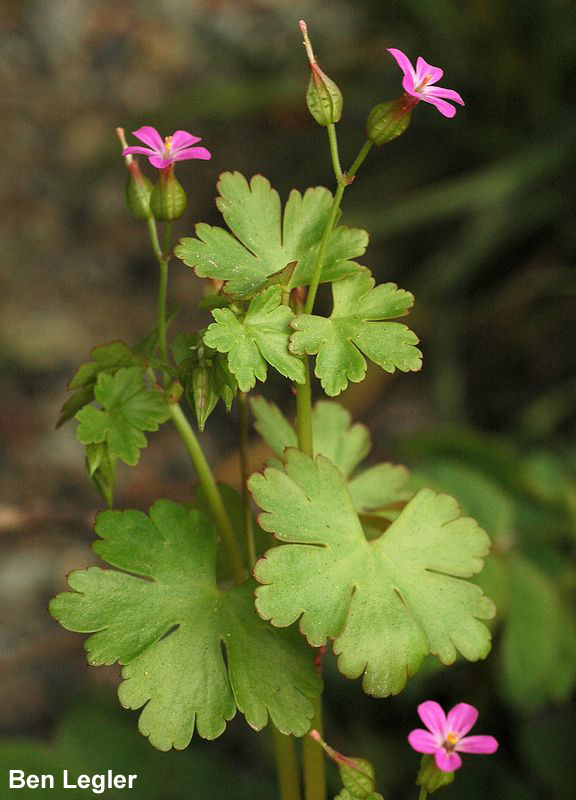
Why it's a problem
Shiny geranium is relatively new to Washington, but it has quickly spread to many counties on the west side of the state. It is difficult to control and spreads quickly and aggressively.
Shiny geranium can thrive in a variety of conditions. It forms dense mats of plants in forests as well as open areas such as lawns and creek edges. Infestations can crowd native species and prevent new native plants from establishing.
Plant description
Shiny geranium is a low-growing annual (one year life cycle) with tiny, pink to magenta, 5-petaled flowers that grow in pairs on little stems. Bloom time is spring to late July.
Leaves are shiny (especially later in the season), round to kidney-shaped, with 5 to 7 lobes (that are themselves shallowly lobed).
Sepals (green leaflike structures around the base of the flower) stick out with noticeable cross-ribs. They are shaped like keels on a ship.
Stems are reddish and not hairy, up to 20 inches tall.
Seeds form in teardrop shaped capsules that come to a long point at the tip.
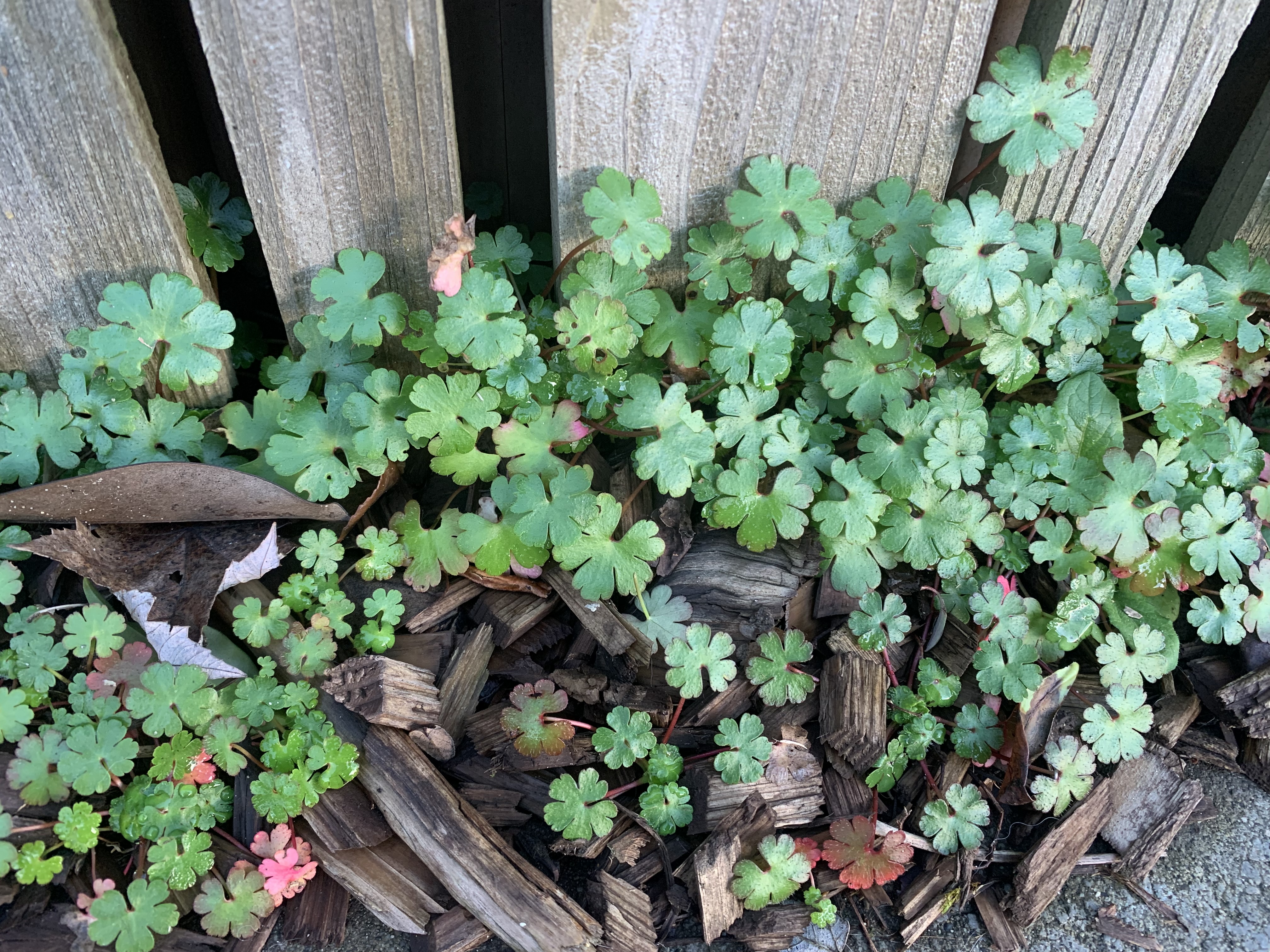

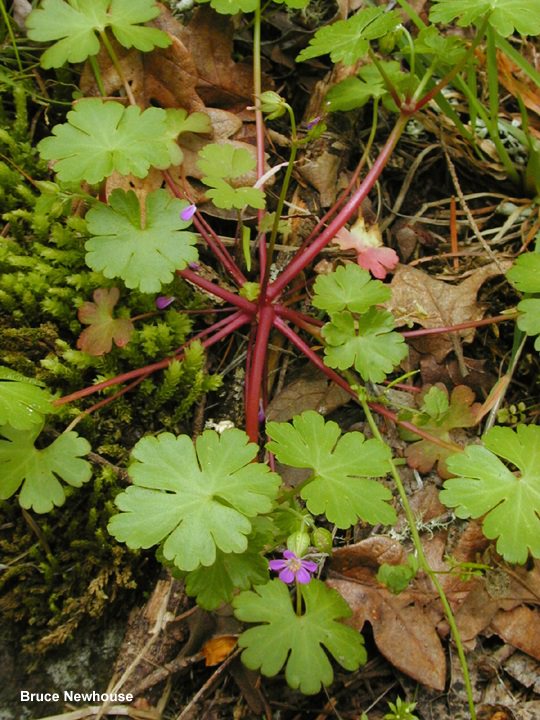
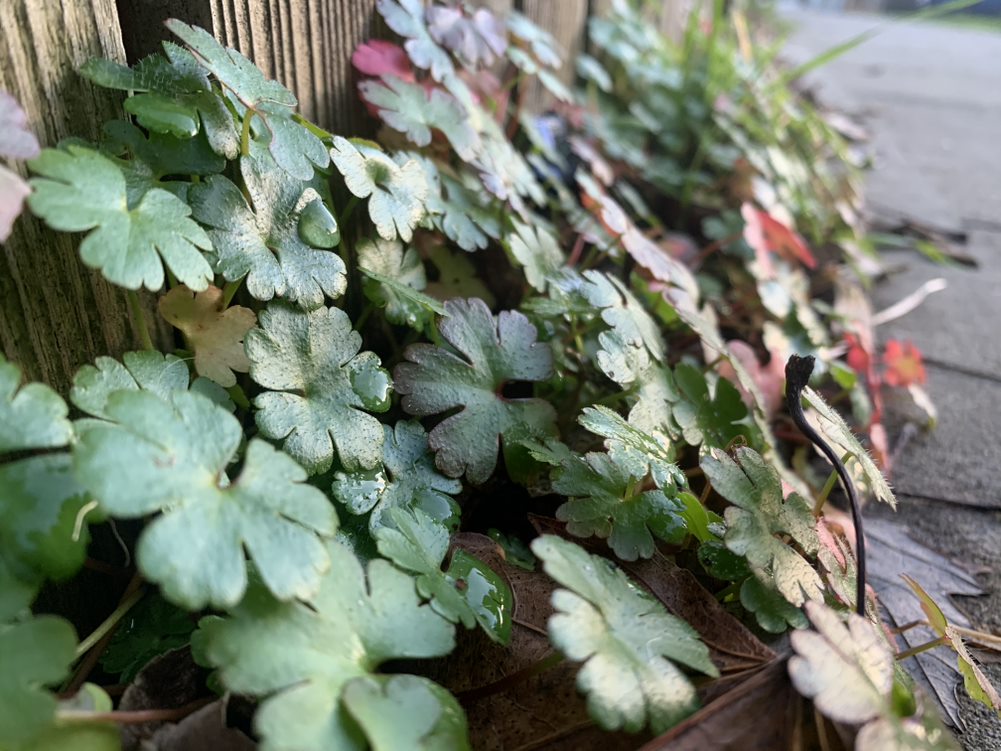
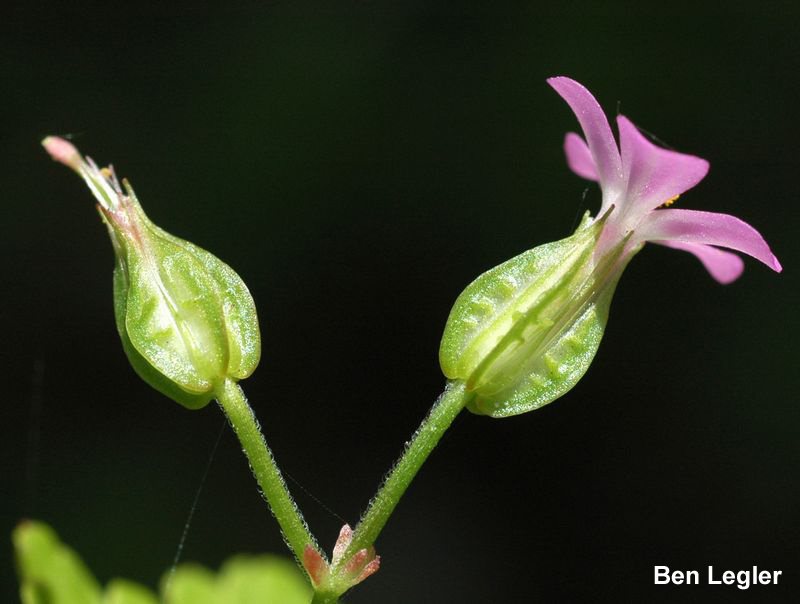
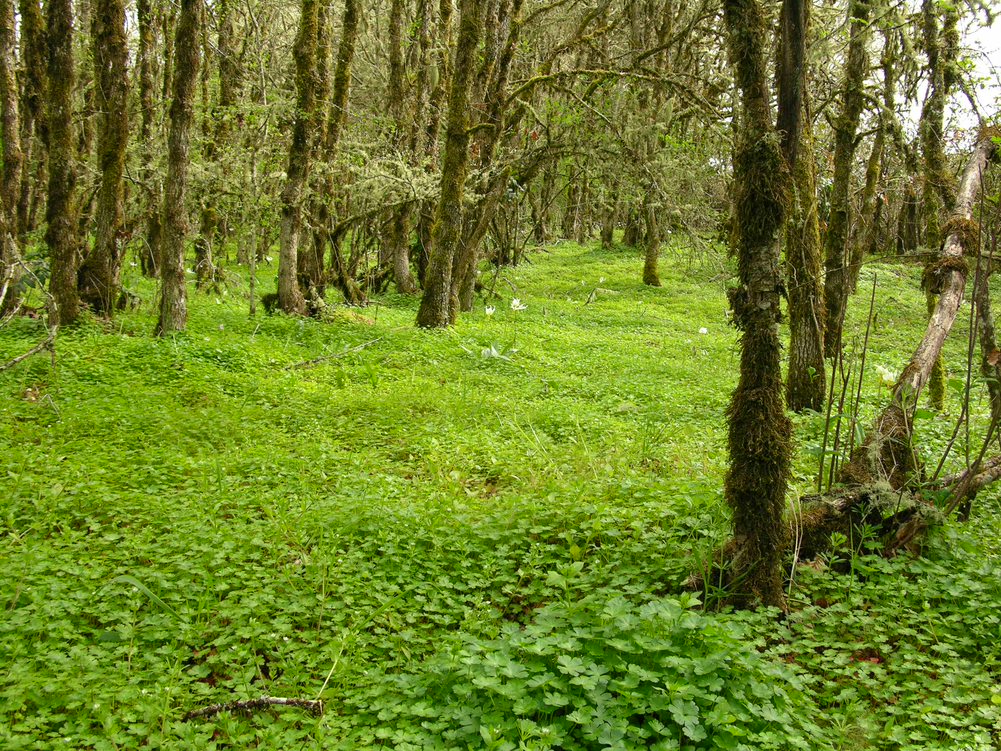
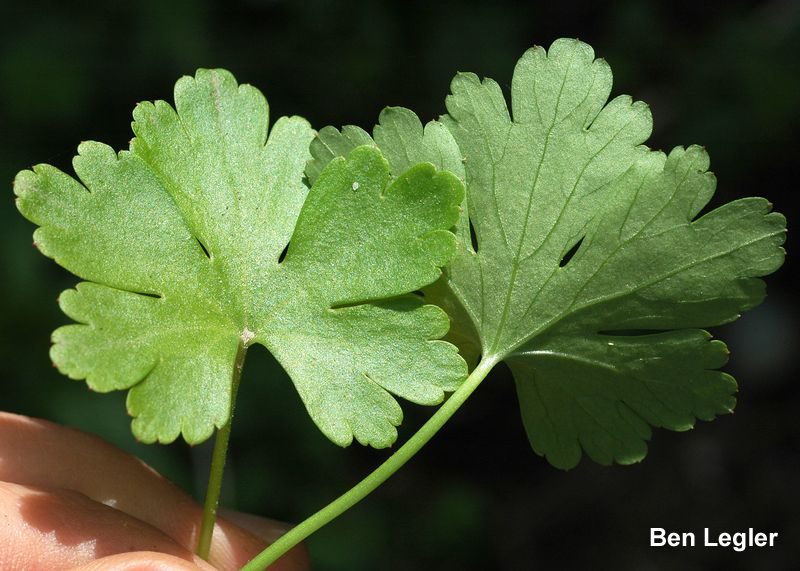
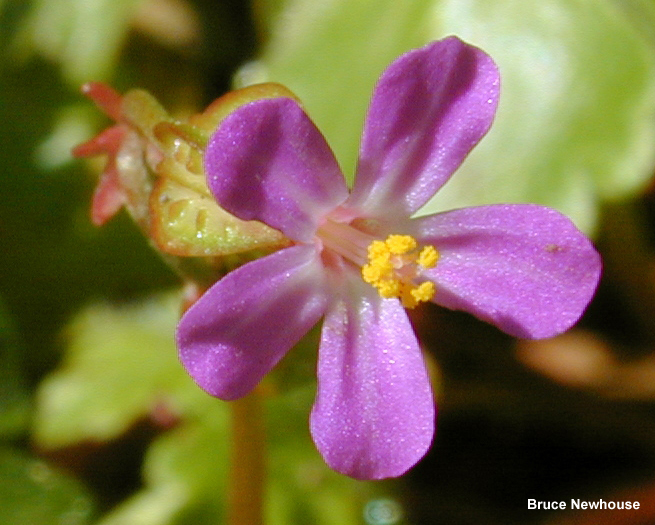

Be aware of look-alike plants
Shiny geranium is often confused with two other non-regulated noxious weeds: herb Robert and dovefoot geranium.
Check out our 2022 Instagram post about how to tell apart shiny and dovefoot geranium
All 3 of these species are closely related (same genus).
Dovefoot geranium has similar leaves to shiny geranium, except they are covered with soft hairs. Dovefoot also has a hairy stem. Dovefoot petals are notched so flowers appear to have 10 instead of 5 petals. Dovefoot is common in lawns and other disturbed areas. It can be a nuisance plant, but it is not a noxious weed in Washington.
Herb Robert grows in similar shady habitats to shiny geranium but is much more widespread throughout western Washington. Distinguish it from shiny geranium by its lacy leaves and hairy stems. Herb Robert is also known as “stinky Bob” due to its often strong and unpleasant odor. Herb Robert is also a noxious weed, but property owners are not required to control it in King County because it is so widespread.
When in doubt, take photos and share them with us or report them on iNaturalist.
What to do if you find it
Please notify us if you see shiny geranium growing in King County. Our program staff can provide you with site-specific advice on how best to remove it.
Property owners are required to control shiny geranium on their property. Also, because shiny geranium is not widely established in King County, we have an opportunity to stop it from spreading if we act quickly. We map all known locations of regulated noxious weeds to help locate new infestations in time to control them.
Control methods
We recommend using a combination of methods to control noxious weeds. In areas with few weeds, it is important to act quickly before they become harder to control. Make a long-term plan as it often takes several years to get rid of most weeds. Start in the least infested areas first and then move into more heavily infested areas.
Prevention
Seeds of shiny geranium can be carried on shoes and vehicles. Special care should be taken to clean off after entering areas infested with this plant. Watch for new patches of this plant during bloom time (from April to July). Shiny geranium has been found in pots of other plants purchased from nurseries. Be sure to inspect all new plantings for this weed, especially if you have purchased plants from areas known to have shiny geranium.
Manual control
Small patches can be hand-pulled or dug out before they are in seed. Take care to remove as much root and stem as possible to prevent plants from re-sprouting. Put all plant material in bags in the garbage, not in compost, to prevent spreading it more.
Cultural control
Control large areas by covering weeds with a deep layer of mulch. For better results, cover with cardboard first, then add a thick layer of wood chip mulch.
Chemical control
Stay safe when using herbicide:
- Always read the label before use.
- Wear a long-sleeved shirt, long pants, shoes, and eye protection.
- Follow state and local regulations.
For best results, spray plants before they flower (late March through April). Use a broadleaf selective herbicide such as triclopyr. You can use a non-selective herbicide such as glyphosate but this kills grass. If you kill the grass, it may result in a flush of new weed seedlings.
For more information or a site-specific recommendation in King County, contact the noxious weed program. For information in other locations, contact your local weed board or extension office.
Disposal instructions
Dispose of in garbage, not compost. Compost does not get hot enough to kill all the seeds.
Noxious Weed Disposal - Washington State Noxious Weed Control Board
Learn more about shiny geranium
Read shiny geranium fact sheet (340KB)
This fact sheet is also available in these languages:

 Translate
Translate